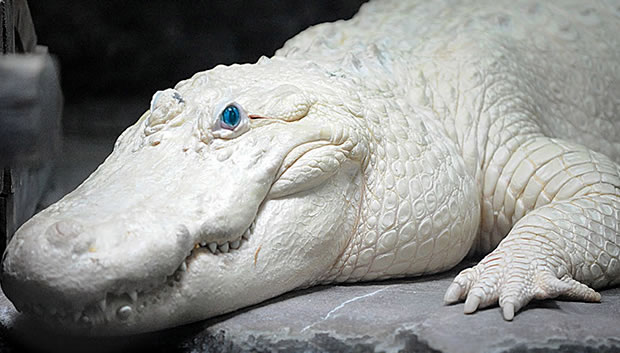
Black-footed Ferret
Robert Powell |
Creature Profile
The Black-footed Ferret is one of the Earth's most endangered creatures native to North America. It is commonly referred to as the prairie dog hunter or American polecat and belongs to the weasel family. It weighs 2 to 3 pounds and can grow to about 26 inches long with females being slightly smaller than males. The black-footed ferret has a long slim body with brown fur which is yellowish and black in color with a black tinge. The underside is lighter than the back. The face is covered with white fur, but around the eyes there is black colored fur which gives it a mask-like face. Black-footed ferrets have short black legs with long claws and a tail with a black tip. Their skulls have large strong jaws and teeth allowing them to feed on flesh. They are nocturnal creatures sleeping most of the day and hunting during the night.
Black-footed ferrets love to hunt and eat prairie dogs as prey. When there are no prairie dogs available, they will also eat small mammals such as rabbits, squirrels, mice and gophers. They also feed on birds, eggs, and small reptiles. They are solitary animals except during the months of March and April (mating season) where males join the females to mate. Females bear a litter of 1-7 kits after 41 days (gestation period). They hide the kits in burrows abandoned by prairie dogs. These kits are usually born blind and hairless and about 6 inches long. They open their eyes following weaning at about 30 days and are fully mature by the third month.
Black-footed ferrets were declared extinct by 1986 with only about 18 of them left in captivity. Since then their numbers have recovered somewhat, but there is still a threat. They are endangered due to the decline of prairie dogs colonies and diseases which ferrets have no natural immunity against such as sylvatic plague, rabies, human influenza, and tularemia. Ferrets are also hunted by other predators such as golden eagles, hawks, and prairie badgers. The World Wildlife Service's attempt to breed the remaining populations to give them a second chance have been successful, but the number of ferrets that have been re-introduced into the wild may not be enough to prevent extinction in the future. Also, the World Wildlife Service has not been able to immunize ferrets against the key diseases affecting them. Therefore, there is need to take more action in order to conserve the species.
Wikipedia Article

|
Wikipedia Article Copyright Notice: This article is licensed under the GNU Free Documentation License. It uses material from the Wikipedia article "Black-footed ferret". |
April 1, 2017
Glenn, C. R. 2006. "Earth's Endangered Creatures - Black-footed Ferret Facts" (Online). Accessed 4/20/2024 at http://earthsendangered.com/profile.asp?sp=645&ID=9.
Need more Black-footed Ferret facts?





